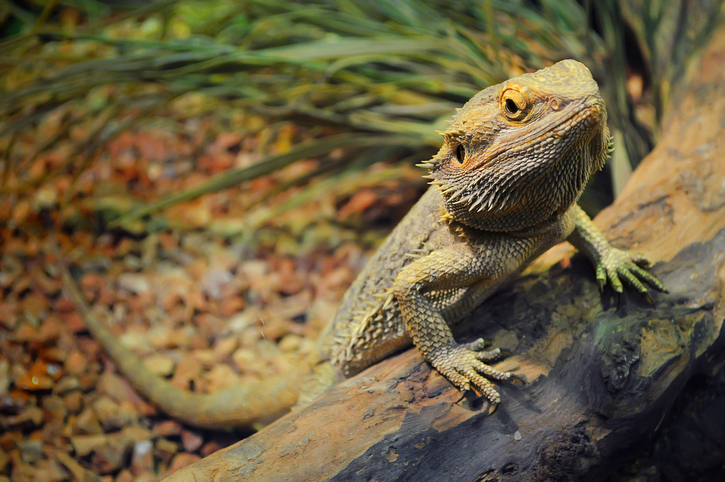Bearded dragons are named for the spiny projections on their throats that they
can puff up and darken to create the appearance of a beard. This behavior is
used for communication, display, and defense.
Bearded dragons are omnivores and eat a variety of insects, vegetation, and
fruits. In captivity, they can also be fed a diet of commercially available pellets
and fresh produce.
Bearded dragons are diurnal – meaning they are active during the day and sleep at
night. They are able to tolerate a wide range of temperatures and are able
to thermoregulate by basking under a heat lamp or cooler areas in their
enclosure.

Bearded dragons are relatively easy to care for in captivity, but they require a
large enclosure with plenty of space to climb, bask, and explore. Bearded dragons are social animals and can be kept in pairs or small groups in captivity, but males should not be housed together as they can become aggressive.
Bearded dragons are able to communicate with each other through a variety of
visual and vocal signals, including head bobbing, arm waving, and vocalizations.
Bearded dragons are able to shed their skin in one piece, which they do
periodically throughout their lives as they grow. They have a lifespan of up to 20 years in captivity, but their lifespan can be affected by factors such as diet, temperature, and disease.
Bearded dragons are able to change the color of their skin to help regulate their
body temperature and communicate with other dragons. They can also change
their color to blend in with their surroundings or to signal aggression or
submission.


